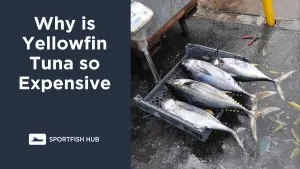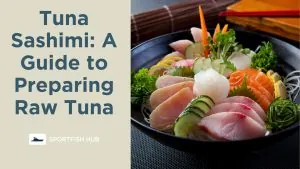Bottom feeders like catfish and carp are known to accumulate contaminants from sediments. But many delicious, nutritious fish feed higher in the water column. Let’s explore what a bottom feeder is, which fish aren’t bottom feeders, and how to eat seafood safely.
What is a Bottom Feeder Fish?
A bottom feeder is a fish that spends much of its time feeding along the bottom surface of a body of water. They consume food that has settled on the lake bed, river bottom, or ocean floor. Common freshwater bottom feeders include:
- Catfish
- Carp
- Suckers
- Sturgeon
- Bullheads
Well-known saltwater bottom feeders are:
- Flounder
- Halibut
- Cod
- Crab
- Lobster
- Shrimp
Bottom feeders are exposed to pollutants like mercury, PCBs, pesticides, and dioxins that collect in sediments. These chemicals can accumulate in their tissues.
10 Popular Non-Bottom Feeder Fish
Luckily, many nutritious and delicious fish species feed higher up in the water column. Here are 10 healthy alternatives to bottom feeders:
1. Albacore Tuna
Albacore tuna are open ocean swimmers that hunt for food midwater. They consume fish like mackerel, saury, and sardines.
2. Salmon
Salmon feed throughout the water column, not along the bottom. Some species even eat insects at the surface. Sockeye salmon prefer small fish like herring, pilchards, and squid.
3. Rainbow Trout
Rainbow trout swim in lakes and streams feeding on aquatic insects, worms, zooplankton and small crustaceans. They occasionally eat small fish.
4. Mahi Mahi
Also called dolphinfish, mahi mahi are surface feeders that prey on flying fish, crabs, squid, mackerel and small tuna in the top 150 feet of ocean.
5. Anchovies
Anchovies form large schools and feed on zooplankton, phytoplankton, and copepods suspended in the water column.
6. Atlantic Mackerel
Atlantic mackerel are fast swimmers that eat shrimp, copepods, fish eggs and small organisms like herring. They hunt up to 600 feet deep.
7. Sardines
Sardines feed on plankton, copepods, fish eggs, and krill floating in the water. They don’t forage along the bottom.
8. Tilapia
Farmed tilapia consume formulated feed pellets. Wild tilapia graze on algae and plants suspended in the water, not the bottom.
9. Arctic Char
A close relative of salmon, Arctic char cruise cold, clear lakes feeding on zooplankton, insects, fish eggs, and small crustaceans.
10. Barramundi
Barramundi inhabit tropical rivers and estuaries stalking small fish like mullet, bream, and minnows in the water column.
Mercury Levels in Fish
| Fish Species | Mercury Level |
|---|---|
| Herring | Low |
| Salmon | Low |
| Anchovies | Low |
| Sardines | Low |
| Rainbow Trout | Low |
| Tilapia | Low |
| Albacore Tuna | Medium |
| Halibut | Medium |
| Mahi Mahi | Medium |
| Swordfish | High |
| Shark | High |
| King Mackerel | High |
| Tilefish | High |
Eating Fish Safely
To reduce contaminant exposure from any fish:
- Choose smaller, younger fish which have had less time to accumulate pollutants
- Remove skin and fatty tissue where chemicals concentrate
- Grill, broil or bake to allow fat to drip away
- Check local fish advisories for guidelines on species and consumption frequency
Pregnant women, nursing mothers, and young children should minimize high mercury predatory fish like shark, swordfish, king mackerel and tilefish. But they can safely eat 12 ounces per week of low mercury fish like salmon, trout, anchovies, herring, and sardines.
Recommended Intake Frequency
| Group | Low Mercury Fish | High Mercury Fish |
|---|---|---|
| Pregnant Women | 2-3 servings per week | Avoid |
| Nursing Mothers | 2-3 servings per week | Avoid |
| Young Children | 2-3 servings per week | Avoid |
| General Population | Unlimited | 1 serving per week |
Summary
While some bottom feeders may contain elevated levels of pollutants, many midwater and surface feeding fish provide great nutrition and taste. Following seafood consumption advice helps reduce any risks. So take advantage of healthy, sustainable fisheries and expand your horizons beyond bottom feeders.











